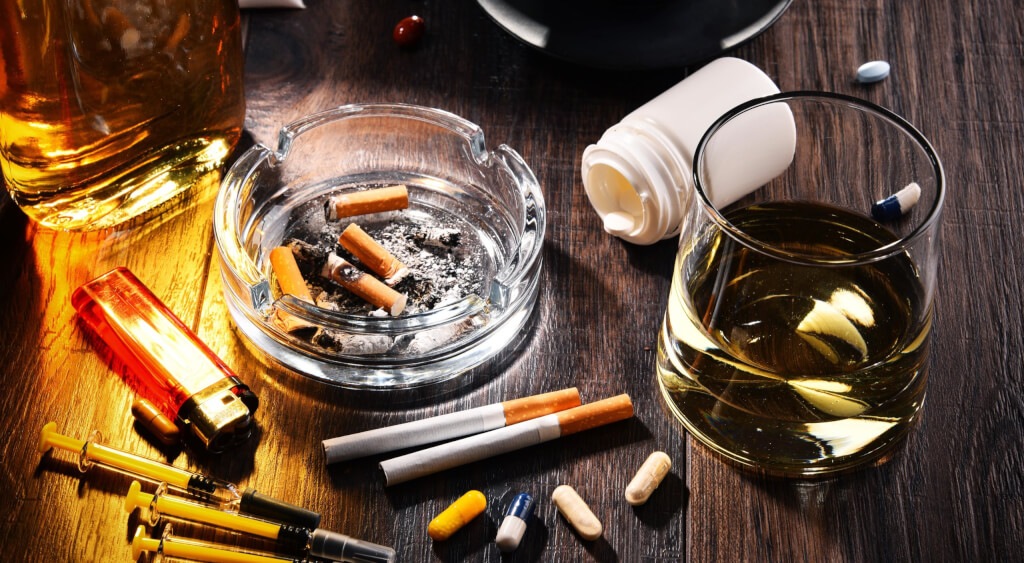When discussing the disease of addiction, most people are familiar with the terms substance abuse, substance use, and substance use disorders. However, not everyone has ever heard the term polysubstance abuse, let alone what it means.
Polysubstance Abuse
Polysubstance abuse disorder is a form of addiction where the person develops an addiction to the effects experienced by the substances being abused rather than a particular substance. A characteristic indication of polysubstance abuse is using a combination of three or more different substances without a preference over any of them.
For example, someone with a polysubstance abuse disorder could switch between alcohol and cocaine, alcohol and meth, and marijuana and opioids. Their objective is to experience the “high” brought on by drug and alcohol abuse regardless of what substances they use.
Furthermore, someone with this condition is more likely to experiment and abuse a wider range of substances to determine which ones provide them with the desired effects. It is equally common to mix multiple substances to achieve the desired effects.
Is Polysubstance Abuse a Physical or Mental Addiction?
Polysubstance abuse is a form of substance abuse and addiction that is just as complicated and confusing as the disease of addiction. Not everyone that develops an addiction will experience polysubstance abuse for various reasons.
However, polysubstance abuse is still a type of addiction that develops from dependence on multiple substances. The key difference is unlike someone who develops a physical and mental addiction to meth, a person with a polysubstance abuse disorder has more of a mental addiction.
Since the individual switches their substance use from one substance to the next, they do not necessarily become dependent on a particular substance. Yet, since their objective is to experience the effects caused by various substances, their minds start to crave those effects rather than the actual substance.
A polysubstance abuse addict also experiments to find the right combination of substances to achieve their ideal effects. Once they stumble onto what combinations of substances work best, they will tend to choose this combination when it is available to them.
For example, someone’s preferred combination could consist of opioids, cocaine, and alcohol to achieve the ideal effects. Although, if their preferred substance combination is not available, they are perfectly acceptable to mix other substances, so long as they can experience the desired effects.
Ultimately, someone with a polysubstance abuse disorder does not care whether they use drugs or drink, so long as they are getting high from the combination of substances.
What Are Some Commonly Mixed Substances?
The most common substances a person abuses when they have polysubstance abuse disorder could include:
- Psychedelics
- Alcohol
- Opioids
- Marijuana
- Benzodiazepines
- Heroin
- Cocaine
- Synthetic Drugs
- Amyl Nitrate
- Meth
- Designer Drugs
When someone uses three or more of the above substances and mixes at least two of them regularly, it indicates they have a polysubstance abuse disorder.
Who Is At Risk of Developing Polysubstance Abuse Disorder?
While anyone who mixes multiple substances could develop this disorder, in particular, teenagers and young adults have a higher risk of polysubstance abuse. It can be more challenging to obtain a regular supply of a specific substance.
So, this age group is more prone to experimenting with a broader spectrum of substances that can help them experience the sensations and feelings of being “high.” Furthermore, the substance use habits of teenagers and young adults are also more erratic, such as binging on alcohol and drugs in larger amounts in a shorter period of time.
As a result, there are increased risks faced by those struggling with polysubstance abuse disorder, including:
- Increased Risks of Accidental Overdoses – Mixing multiple substances could result in overdosing from mixing the wrong substances or too much of the substances.
- Triggering Underlying Mental Health Disorders – Certain mental health disorders can remain dormant until triggered by substance abuse.
- Increased Health Risks – Depending on the combination of substances, they could affect heart rates, respiratory rates, and other bodily systems, increasing the risks for respiratory failure, heart attack, convulsions, seizures, and coma.
Detox Treatment At Home With MD Home Detox
For those who develop this type of addiction, developing a comprehensive treatment plan is essential to help them overcome their addictive tendencies and avoid relapse. Even though someone with a polysubstance abuse addiction is not addicted to a particular substance, detox is still a necessary process.
The body must be flushed of all substances in order for the brain to overcome mental addiction. The best approach is to start your detox in the comfort of your home that is medically supervised by MD Home Detox.
We can help you through the detox process using a custom-tailored treatment plan that meets your specific objectives, needs, and goals. Furthermore, we can assist with planning long-term addiction recovery care to ensure you can maintain your sobriety and make recommendations on what treatments would be best for you.
Please feel free to contact us today by calling to learn more about our concierge-level, personalized at-home medically supervised detox programs that are available in California, New York, New Jersey, Washington, Pennsylvania, Colorado, and Connecticut.

